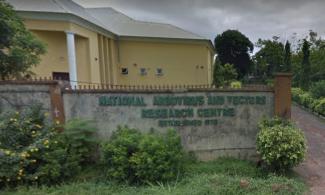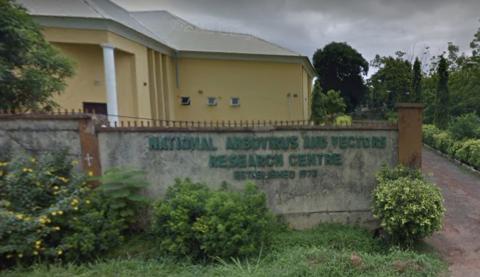
The NAVRC appears to be the most inefficient in the Ministry of Health, as details of funding and output in the last five years shows.
The National Arbovirus and Vector Research Centre is the focus of the fourth part of a Civic Media Lab series on the performance of health agencies in Nigeria. The NAVRC appears to be the most inefficient in the Ministry of Health, as details of funding and output in the last five years shows.
The centre was allocated meagre funding for its capital expenditure between 2015 and 2019. Civic Media Lab observed that the centre, saddled with the responsibility of identifying and controlling the vector-borne diseases, was given only N454.75m in five years.
The agency’s projects received approval to draw down on over N100m in the period within the lab’s scope. Data mined from its budget revealed that it was allocated a little over N100m twice in five years. Interestingly, the presence of a yellow fever outbreak in 2019 was not enough reason to jerk up the centre’s capital expenditure budget beyond N50m.

The low budgetary ration meant that the centre was limited to reporting the outbreak of yellow fever in five states out of a possible 27 that reported one suspected case since the epidemic broke out in Kwara State in September 2017. As at August 2019, the agency had carried out yellow fever surveillance in three states, an insect study report in four others and a ‘rapid response’ in one. It had also succeeded in setting up a sentinel point for early detection and warning in the three locations it surveyed, out of the 24 it hoped to have established by December 2019.
In the five years under review, NAVRC obtained approval for one research which reoccurred two times. The said study theme, which was described as an ‘implementation research,’ was not among the five reports, nine kinds of research and one publication CML found on the centre’s website.
Over-budgeting or miscalculation
In 2015, NAVRC received N99.47m for the payment of salaries, overheads and emoluments. It earned approval for N17.09m for capital spending.
The agency went on to list two projects worth N20m – N2.91m more than it was assigned, for its unfixed expenditure. None of the two-line items was related to research, development or surveillance. One of them was for the training of core trainers on the field, laboratory and insect study techniques, for the teaching of health workers, which is well within the scope of their mandate. The other was for the provision of internet facilities. [story_link align="left"]80553[/story_link]
Budget implementation reports and budget presentations by present and past presidents have established that the federal government rarely fulfils 100 per cent of its capital expenditure commitment; this means despite these meagre allocations, the agency might not have received the full provision.
A federal appendage of the Anambra State Government
Civic Media Lab found 10 publications on the centre’s website. One of the pieces was a research on the first discovery of a species of yellow fever carrying mosquito, published in 1992. Two were published in 2013; another was a joint paper with the Nigeria Centre for Disease Control on the response to the outbreak in Kwara State. The remaining six were published between 2015 and 2019, one of which was an explanatory piece on arboviruses.
Out of these nine kinds of research, six were studies conducted in Anambra State, one was the 1992 study done in Delta State, the other was the Yellow fever response paper in Kwara State and the last one was a study on the mental content of water in a site in Jos, the Plateau State capital. The research in Jos is outside the scope of the organisation’s duties.
Two of the mandates given to NAVRC read, “Study ecology, bionomics, distribution and seasonal variation of disease vectors especially arbovirus vectors – diseases carried by insects and ‘identify and incriminate – control principal arbovirus and other disease vectors in Nigeria’.”
The centre showed evidence of carrying out its surveillance responsibility in five states on its website between 2015 and 2019, despite receiving approval to execute that particular mandate in the six geopolitical zones within the period under the scope. [story_link align="left"]80704[/story_link]
In 2018 and 2019, the centre received approval to draw down on N78m for an ‘Implementation Research: Building Sustainable Structural Barriers against Arbovirus Vectors and Monitoring Impact on Disease Burden.’ No evidence of such research was found on the Centre’s site.
In contrast, not one of the survey themes it conducted in Anambra was represented in the budget. The field studies of the centre were concentrated in one location, according to data found on its site, while an active Yellow Fever outbreak was ongoing in all states of the federation.
An unmet mandate

NAVRC said on its website that it was established in 1973, in response to a Yellow Fever outbreak. The Federal Ministry of Health had, after a 1969 and 1973 outbreak of Yellow Fever, approached the World Health Organisation to develop a response to disease-carrying insects. The WHO, the Federal Government and the Anambra State Government reached an agreement in 1981 that saw the field centre set-up eight years prior, become a vector control research agency.
Some of the mandates given to this agency are to “conduct field disease vector surveillance and control throughout Nigeria; study ecology, bionomics, distribution and seasonal variation of disease vectors especially arbovirus vectors – diseases carried by insects; identify and incriminate – control principal arbovirus and other disease vectors in Nigeria; train middle level manpower in field, laboratory and entomology – insect study techniques; and screen Nigerian plants to determine their pesticidal properties”. [story_link align="left"]80810[/story_link]
CML noticed that in five years, the agency received N28m to carry out surveillance of Yellow Fever, dengue and zika viruses in the six geopolitical zones of the country. In 2017, it received an approval of N109m however, to conduct quarterly disease surveys in the North-Central zone alone.
In an August 5, 2019 news post, the centre said it had trained disease vector surveillance officers in Benue, Niger and Nasarawa and established sentinel stations in the states as well. In a later post the same month, the centre said it conducted training for DVSO’s in Ebonyi and Anambra states. It said the lecture was a precursor to starting surveillance in the three locations. However, there was no evidence of the actual surveillance on the centre’s site. There was also no detail of the surveillance conducted in the three North-Central states where sentinel stations were set-up.
Between January and July of 2019, 1,905 Yellow Fever cases had been reported in all the states of the federation and the agency did not seem to be playing a key role in dealing with the epidemic.
According to reports, the same species of mosquitoes that transmit Yellow Fever are also responsible for dengue and several other neglected tropical diseases. The symptoms are often similar; hence little evidence of Dengue has been recorded in the country, despite NAVRC saying in some of its research in Anambra and its rapid response report in Bauchi that there are dengue transmitting mosquitoes in the two states.
Arboviruses (Arthropod born viruses) are infections transmitted by insects, including spiders, scorpions, ticks, and others. NAVRC’s research interest has veered beyond mosquitoes just once when its staff studied house flies in a community in Anambra State.
Working in silos?
The Nigeria Centre for Disease Control has the responsibility of responding to and containing disease outbreaks in the country. Following the study of the research done by NAVRC, CML figured that both agencies should have a working relationship in dealing with outbreaks caused by insects.
This is only evident in the research paper on the response to the yellow fever outbreak in Kwara State by the NCDC. NAVRC is not listed as one of the reference laboratories the NCDC uses to test for yellow fever cases – a test which often brings out inconclusive results. Many of the Yellow Fever samples tested by the NCDC are transported to a WHO reference laboratory, Institute Pasteur in Dakar, Senegal.
The NCDC also runs a national field epidemiological lab training programme, which the NAVRC has not shown in its researches, reports and news posts to be part of. The NCDC, in its last Yellow Fever update for the week ending January 31 2020, said some of the challenges it encountered in dealing with the Yellow Fever outbreak in the country included, “low index of suspicion of YF among health care providers, poor documentation of YF surveillance in many health facilities across states and poor support for outbreak investigation and response at the state level.”
The centre had inadvertently accused the NAVRC of failing to train health workers across the country, to sight and respond to arbovirus outbreaks. It had also implied that the NAVRC was unable to set-up a structure that enabled states to take action in the case of an outbreak.
This is a problem the NCDC is appearing to solve without the NAVRC, through its field epidemiological programme. The NCDC often refers to the National Primary Healthcare Development Agency, when reporting on its multi-agency approach to emergency responses to insect-baring disease outbreaks.
The NAVRC did not mention sending any of its findings to the disease control body and often conducted its insect studies when NCDC had already confirmed a case of yellow fever. NCDC reported an outbreak of yellow fever in Alkaleri LGA in Bauchi in August 2019, while NAVRC conducted its ‘rapid response’ three months later. CML had hoped to find evidence in either the NCDC’ or NAVRC’s reports that the latter was able to control the vector causing an outbreak, leading to the end of the epidemic, but none was found.
As it stands, the NAVRC seems not to have found usefulness 47 years after the WHO partnership with the Federal Ministry of Health that midwife it. It is no wonder its role in the COVID-19 battle has been limited to a sensitisation outreach to a cattle market in Enugu State.